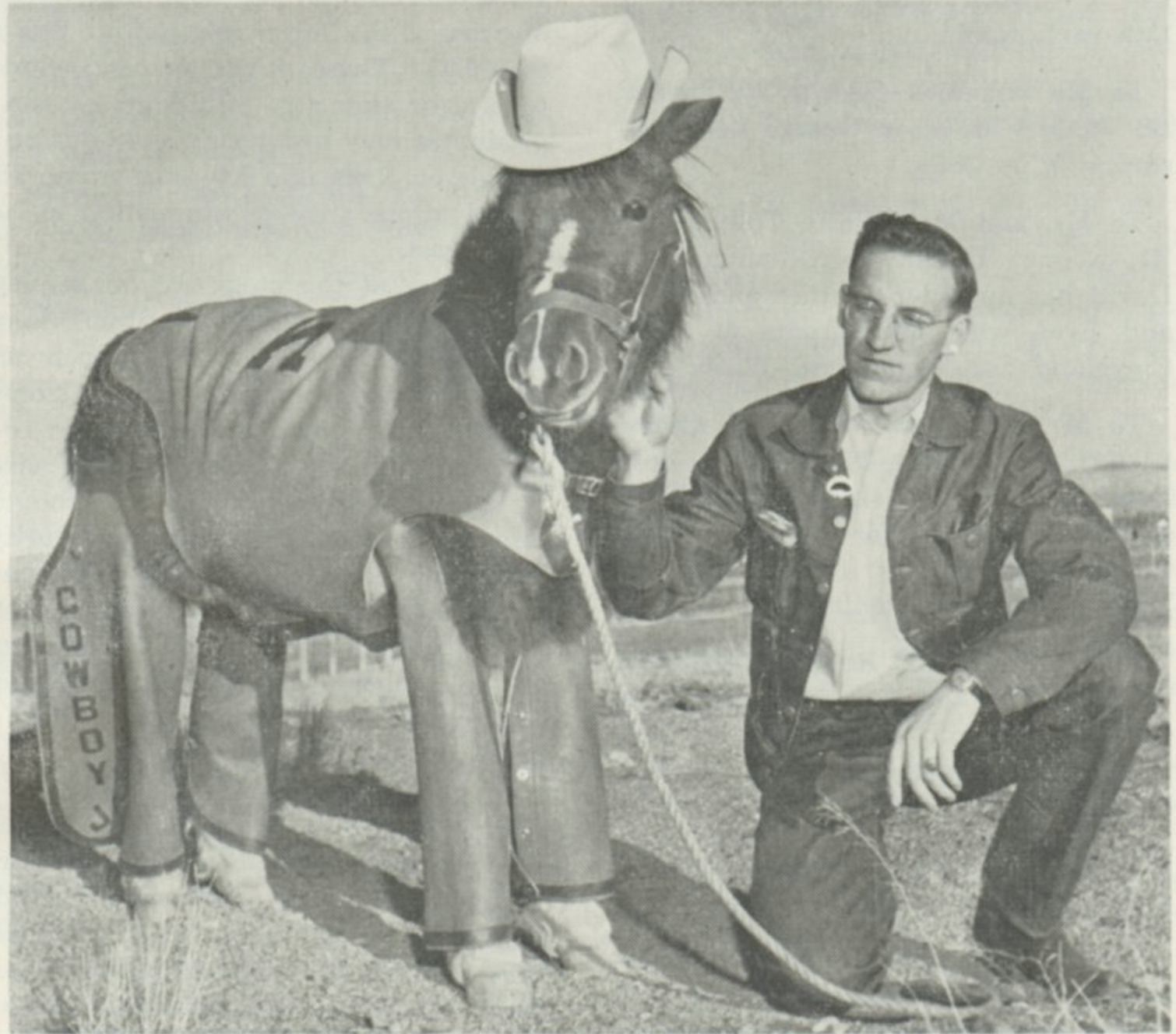Shetland Ponies
Gifted by Cheryl Tuck Smith
Gathered by Grace Langeberg
Cheyenne, May 2025
Cheryl fondly recalls her affection for Shetland ponies and the story of how her grandparents' own pony became the first Cowboy Joe at the University of Wyoming.
Cheryl at the Frontier Museum in Cheyenne. Photo by Grace Langeberg
Cheryl: Well, Grace, thanks for doing this and it's kind of fun to do this. And I was born and raised in Cheyenne and raised on my family's cattle ranch. And my family came here [Wyoming] in the late 1800s. So, over the years my family raised thousands of Shetland ponies. And about two years ago, I asked the family that's still raising the Shetland ponies if they knew somebody that would like to board an old horse with my horse because my horse was lonesome. There were no other horses with him, and they said they didn't know anybody.
Well, about two months later, they called me and said, “Would you like a Shetland pony when we’re doing the roundup?”
And they do that roundup once a year. These ponies are raised up in the foothills of the Snowy Range, and they are brought down once a year. They never see humans except once a year when they're rounded up.
So, on the first day of the roundup [when they bring the ponies down to a lower pasture] they found a dead mare. And beside the dead mare was this little pony. And the little pony had not left her mama and mama was decomposing. The pony had not gone with the herd, but they found the pony and she was [a] pretty thing and very thin, and she couldn't keep up with the herd of the roundup.
So, they picked her up and carried her to the truck and brought her down to the barn. And that's when they called me to see if I'd like to have this pony. And of course, I said yes. Now she was scared half to death of people because she had never seen people. And so, my cousins put a halter on her. I had to buy the smallest halter I could find in the store.
They put a halter on her and they said, “Now, when you get home, you've gotta be really careful because if she gets loose from you, you'll never catch her.”
I went, okay, and I'm by myself. So, I bring her to my place, and I call my neighbors and say, “Will you help me unload this pony?”
Now she's little, but they're tough little stinkers, and so they helped me get her in a stall. And so, every day I would feed her twice a day and I'd go down and talk to her. She was scared to death of me, and if I walked [into the] stall with her, she'd turn her little fanny to me like she was going to protect her food and keep me away from it. So, I understood that. Eventually I put a chair in her stall and would talk to her, and eventually I could pet her.
So, at Christmas time, my family came out and on Christmas morning I said, you know, let's go feed the cattle before we open presents. We all walked down to the barn. This is my husband, daughter, granddaughter and my great granddaughters with me.
We get to the barn door, and she says, “What's going on?”
Well, I had put a great big red bow on the stall, and she saw the bow and she went over there and just was so excited to see this pony. Now, when I got this pony, usually a horse has a rounded fanny. Well, you could see her bones. She was so thin. She was very tiny and still very thin.
I told my granddaughter she could name her, and she said, “Oh, princess.”
Then I told my great-granddaughter, “What name would you like?”
She says, “Sweetie,” and I said I really think she's a miracle.
Because up in those hills are bears, mountain lions, coyotes, everything, all these predators that could have killed her. And for her to survive any length of time up in those hills was a miracle. So, her name, we call her Miracle Princess.
The tie-in with the University of Wyoming is kind of fun because in the 1950s my great grandparents gave Cowboy Joe, the pony, that's the mascot for the University. [They] gave the first Cowboy Joe to the University of Wyoming, and my family has been doing that since the 1950s. And Cowboy Joe, the original one, was again, a pony that was found in the hills with a dead mama and he was an orphan. The original. So now, I have another orphan. And she's just adorable. She loves people. I love having her. She's just like having a big dog. And now she's fat.
Note: The transcript above has been condensed from its original audio recording to improve the flow and readability of the story.
Cowboy Joe and one of his handlers, March 1951. Photo from the Collections of American Heritage Center, University of Wyoming.


